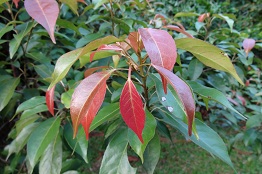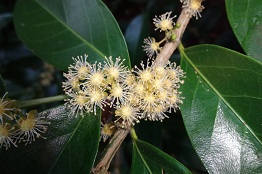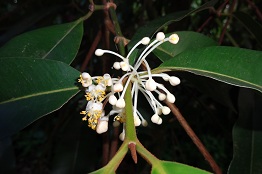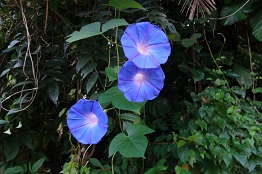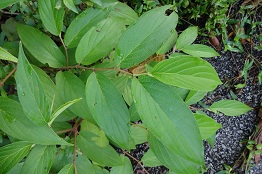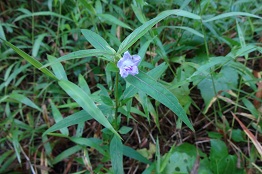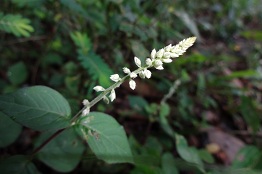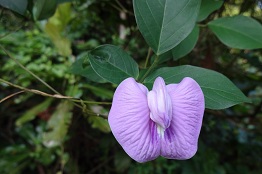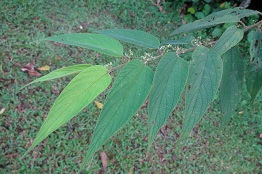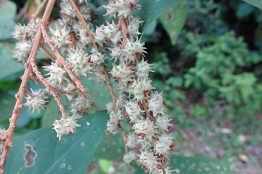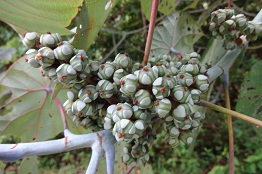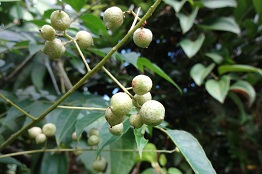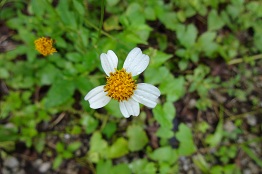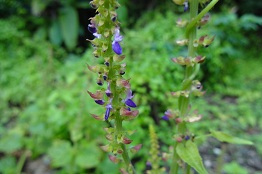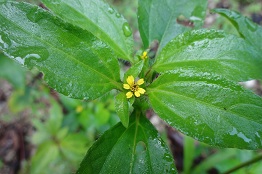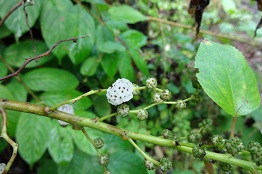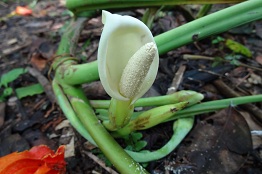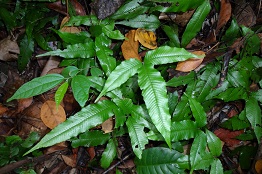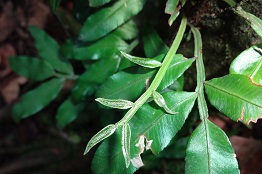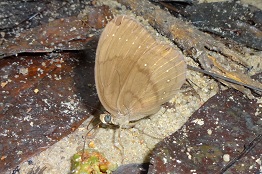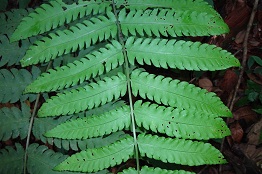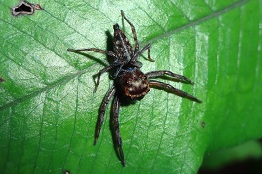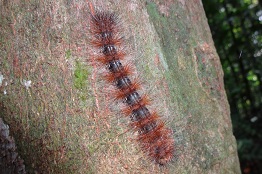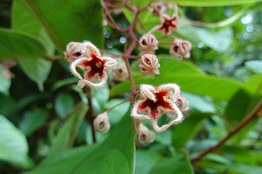Highlight:
Another year has gone by since I last visited this nature park. The main reason that prompted me to select this destination was to verify the identity of some ferns from the genus Cyclosorus, where several of them can be found along the path. For quite a while, I was confused between the ferns from the genus Cyclosorus and Christella as they look rather similar. The spore-containing bodies (sori) at the underside of the leaves (called fronds in fern) can usually provide some clues to its identity though not always the case.
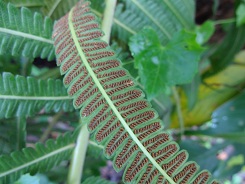

 From left to right:
Cyclosorus subpubescens,
Cyclosorus opulentus and
Cyclosorus polycarpus.
From left to right:
Cyclosorus subpubescens,
Cyclosorus opulentus and
Cyclosorus polycarpus.
One other Cyclosorus species that was not seen during this walk was Cyclosorus interruptus. It is a type of "walking fern" that spread around by its creeping stem while the other three Cyclosorus species seen here do not creep around.

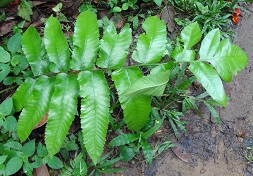 I was shock when remnant of this unusual fern,
Tectaria semipinnata. The fronds were all being cut off and only
the base of the fern was left along the bank of the stream (left picture). The damage looked like the result of routine
path-clearing activity since the fern happened to position itself by the side of the path. It was a pity that such a
rare fern has been defaced.
I was shock when remnant of this unusual fern,
Tectaria semipinnata. The fronds were all being cut off and only
the base of the fern was left along the bank of the stream (left picture). The damage looked like the result of routine
path-clearing activity since the fern happened to position itself by the side of the path. It was a pity that such a
rare fern has been defaced.
One surprising find was the fern Athyrium accedens (right picture), also growing along the same stream. However, it had only one frond left. The rest of the fronds were buried by branches from fallen trees. It was also growing next to the path, which means that it was not really safe for its survival. This was the only one that I could find around the area.
Besides the ferns, the most exciting find of this walk was this woody climber that should belong to the bean family judging
from the appearance of the flowers.
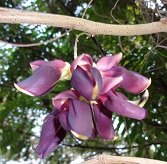
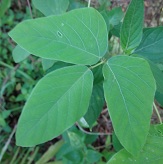 Its woody climbing branch that run high up on
a tree was devoid of any leaves but had several bundle of flowers hanging from it.
Its woody climbing branch that run high up on
a tree was devoid of any leaves but had several bundle of flowers hanging from it.
 After searching around, I managed to find
what I believe to be the leafy part of this plant. It was intertwined with another climber,
Butterfly Pea (Centrosema molle) and their leaves look rather
similar.
After searching around, I managed to find
what I believe to be the leafy part of this plant. It was intertwined with another climber,
Butterfly Pea (Centrosema molle) and their leaves look rather
similar.
On the right is a leaf from the Butterfly Pea. Can you spot the difference between the 2 leaves? As for the identity of the climber, it was still a mystery. [Update: Mucuna pruriens (Velvet Bean)]
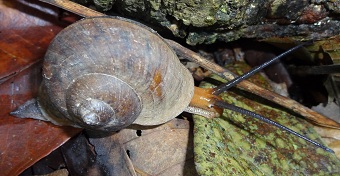
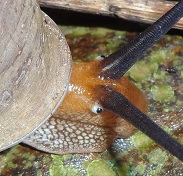
This land snail was very special. The
other snails that I came across so far have their eyes located at the tip of the tentacles (the long stalk-like
structure that stick out from its head region). For this particular snail, the eyes were position near the base of the
tentacles. I actually noticed it when I was examining the enlarge picture at home.
[Update: Cyclophorus perdix aquila]
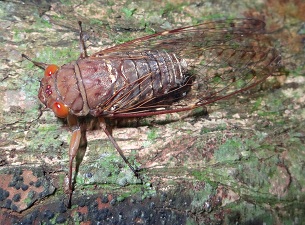
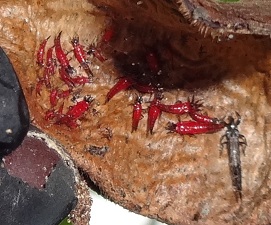
Another creature that worth
highlighting was this cicada (left picture). Firstly, it was not easy to get up close to take a picture of cicada as it
is a highly alert creature. Secondly, this one had a pair of bright orange eyes which was different from the other
cicada seen. I was not sure whether the eye colour was permanent or a transition stage.
The tiny reddish creatures (right picture) were thrips. They were found hidden in the ripen fruit from a Sterculia species. I knew thrips are black in colour but was not aware that their young ones are red.
The forest path in this park is usually populated with mushroom especially during raining seasons. It was no different this time round. Here are some of the amazing mushrooms seen along the path.
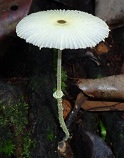
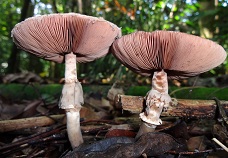
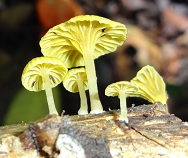

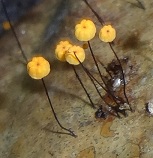
The pictures from this trip were taken with my newly acquired compact camera. Although the pictures seem to turn out well, the sharpness in those pictures without flash turn out to be worse than those taken with my current camera. Hopefully it is because I had not get use to it yet and not due to its property.
Photo Gallery:
Below are selected photos from this trip arranged according to the sequence that they were taken. There is a text link under the photo that will direct you to more photos of the same species if they are available in my website.
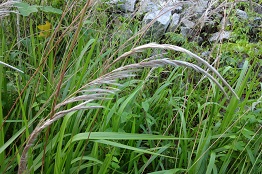
DSC00279
Unknown grass
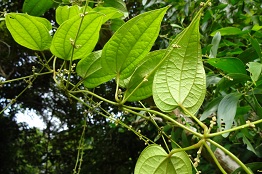
DSC00380
Dioscorea species
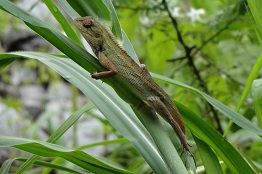
DSC00412
Calotes versicolor
(Changeable Lizard)
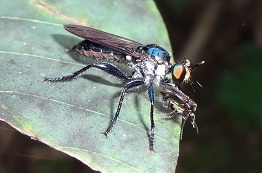
DSC00424
Robber Fly

DSC00483
Froghopper
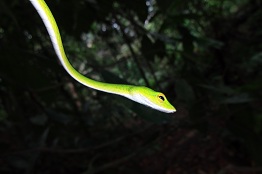
DSC00649
Ahaetulla prasina
(Oriental Whip Snake)
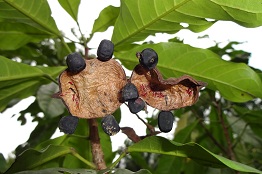
DSC00786
Sterculia species
Statistics:
